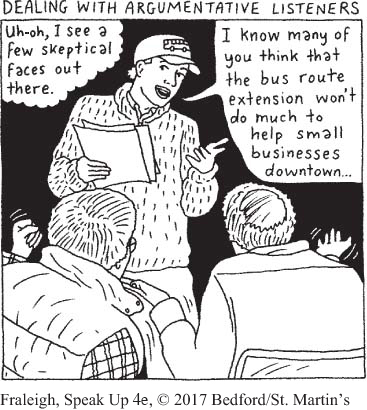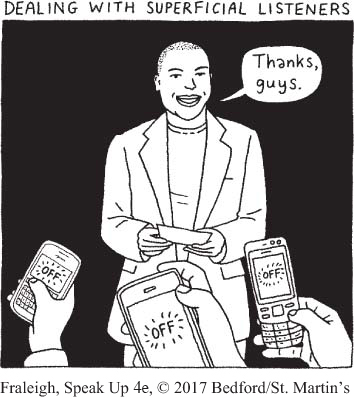Encourage Active Listening During Your Speech
When you are ready to give your speech, be sure to pay attention to what you see among your audience. Practice audience surveillance, pay particular attention to if and how they are listening to you, and be prepared to make adjustments as you go.
Tailor Your Delivery. As you deliver your speech, pay attention to factors you can control that affect your audience’s ability to listen—
Watch Out for Argumentative Listeners. As discussed earlier in this chapter, argumentative listeners will attend to only as much of your presentation as they need to build up their own case against it. To improve your chances of keeping their attention, acknowledge their viewpoints early in your speech (for example, “I know that some of you may not think that having tattoos will affect your careers”), and repeatedly press your main message throughout the presentation.

Watch Out for Defeated Listeners. Defeated listening occurs when listeners feel overwhelmed by your message and find it too difficult to follow. Speakers who deliver technical or detailed presentations may find this a particular challenge. Defeated listeners may avoid eye contact or work on something else while you speak.

Page 111
You can prevent defeated listening by pausing occasionally during your speech to ask the audience questions—
Watch Out for Superficial Listeners. Audience members who pretend to pay attention but who are in fact distracted by internal or external noise (such as wandering thoughts, cell phones, or conversation) are engaged in superficial listening. To prevent it, request that people turn off cell phones and resist checking for messages on handheld devices or laptops during the presentation. Also, be sure to use direct eye contact with people who you sense are listening superficially (they will pay more attention if they see that you are watching them), and go ahead and ask them questions—
